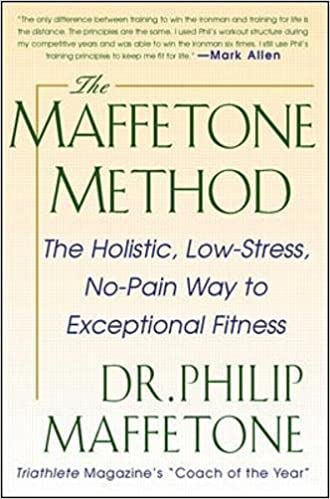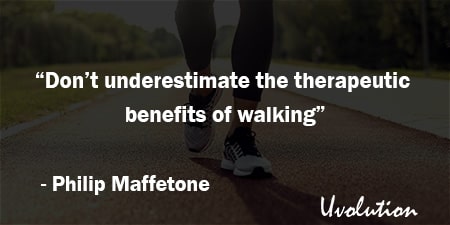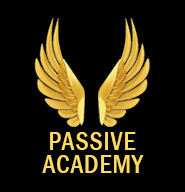The Maffetone Method by Philip Maffetone Summary
The Book in 1 Sentences
The Maffetone Method: The Holistic, Low-Stress, No-Pain Way to Exceptional Fitness
“The Maffetone Method stresses simplicity and common sense. Once you learn a few commonly misunderstood concepts of exercise and diet, you’ll be well on your way.
The most inexpensive and perhaps most successful workout device is the one you possess naturally: no machine will do more for you than you can do with your own body. Dramatic benefits from exercise can be attained by easy walking 30 minutes, five days a week.
To do more, such as running a marathon, will require additional training, but never to the point of pain. ...
The Maffetone Method will give you unlimited energy, make you burn more body fat, and improve the quality of your life—forever. It is based on a number of scientifically proven concepts known to few people other than exercise professionals.
‘No pain, no gain,’ while an intriguing advertising message and a temporarily effective exhortation from a high school varsity coach, is quite simply wrong. When you exercise strenuously, your body is programmed to burn less fat.
To encourage your body to burn more fat all day long, you must keep your heart rate within certain target levels, the formula for which is simple. In fact, when you finish a workout, you should actually feel as if you could easily do it again.” ~ Philip Maffetone
6 BIG Ideas
The Maffetone Method Book Summary
1. Health and fitness
“Two words tossed around as casually as a pair of running shoes are health and fitness. But the difference between them forms the foundation of an exercise philosophy and a workout ethic.
Health is a state in which all the body’s parts, including the muscles, nerves, bones, hormones, organs, and glands, are in balance, or what some call ‘harmony.’ A perfect state of health may not be attainable but always improving our health is something we can all strive for.
Unfortunately, many people assume that health necessarily declines with age. While it is
common for health to decline with age, the decline need not be significant. The more we care for our body, the healthier it will become and the longer we will be able to withstand the adverse affects of aging.
We have the potential to increase our brain power as we age, get into great physical shape, perhaps the best shape of our lives, and to feel better than ever. This is one of the benefits of proper exercise.
Fitness is the ability to be physically active. For some, this means working out; for others, it
means playing tennis again after years of disability; and for some it means being a Master’s
athlete. If you work out four times a week, you’re probably more fit than the person who doesn’t exercise. If you win your club’s tennis tournament, you’re the fittest tennis player there.
But your fitness does not necessarily reflect your health. And being healthy won’t necessarily make you a fit athlete. Health and fitness are two different things. What’s important is to balance the two, to become as healthy and as fit as possible considering your potential, schedule, and desires.”
2. Exercise should be fun
“Exercise should be fun. If it’s a chore, something probably isn’t right: your workouts may be
too long or too intense, or you may not have the right training partner. If it isn’t fun, look for the reason and correct it.
Having fun is a great benefit of exercise, especially when other things are tough—when work is not going great, or you have personal stresses, or it’s the dead of winter.”
“Proper exercise has two primary components. One is that it’s done in a balanced way. ... The other primary concern is fun.”
“Every exerciser’s worst nightmare is an injury. Unfortunately, it is a common occurrence
especially among persons performing anaerobic exercise and among persons who do
not warm up properly.
Even more unfortunate is that most people believe that being injured is part of the workout game. This is not the case.
If you exercise properly, you should never experience injuries (with the rare exception of trauma). If you do get injured, it means that you’ve done something wrong; the injury may be
the result of training, diet, nutrition, stress or some other factor.”
“Aerobic - The ability to obtain more energy through increased fat burning. Anaerobic - The increased use of sugar for energy, and diminished fat burning.”
“When in doubt, go slower. It never hurts to work out easier, but working too hard can have adverse consequences.”
“It may be best to define training as an equation: training = workout + rest”
“Don’t underestimate the therapeutic benefits of walking: it gently stimulates circulation and aerobic muscle fiber activity, is mentally beneficial (much like meditation), and can help
redevelop the aerobic system.”
3. The MAF "Maximum Aerobic Function"
“Once a maximum aerobic heart rate is found, use a range from that number to 10 beats below that number. For example, if your maximum aerobic heart rate is determined to be 155, your aerobic training zone would be 145-155 bpm.
It is important to note that persons using this formula for the first time often find that the
exercise seems too easy. This may be because many people train at very high intensities and/or overtrain.
Sometimes persons find that exercise using this formula is too easy because they are
programmed according to the ‘no pain, no gain’ myth.
In time, as your aerobic system improves, you’ll have to work harder to maintain the same heart rate. This is discussed further in chapter 7; for now, you should understand that your exercise pace will change.
In time you’ll go faster. However, you will perceive your exertion to be about the same since you’ll still be exercising at the same heart rate.”
So, how to figure out our Maffetone-approved aerobic zone?
Start by subtracting your age from 180. (For me, that’s 180 - 31 = 149.)
Then, subtract another 10 and that's your zone. (For me, it's 139-149.)
And remember that “The most inexpensive and perhaps most successful workout equipment you naturally possess: your own body. Walking, jogging, running, swimming, and hiking are examples of natural activity.
No machine will make your workout more effective than you can do with your own body.”
4. Carbohydrate intolerance
“One of the most common problems found in individuals who have a difficult time burning body fat is carbohydrate intolerance. This condition occurs in persons who eat more carbohydrate foods—breads, cereals, rice, potatoes, sugar and other sweets—than their body can properly metabolize.
This results in the production of too much insulin, a hormone released by the pancreas. Too much insulin can prevent fat burning and cause you to store more and more fat in your body.
Normally, about 40 percent of the carbohydrate foods you eat are converted to fat and stored. In many people this percentage is much higher due to excess insulin, the result of
increased age, genetic predisposition, or stress.
Many people whose diet contains 60-70 percent carbohydrates, or more, may be able to burn more fat and be healthier overall once they reduce their carbohydrate intake to a more tolerable level.”
Robert Lustig in Fat Chance also says: “There is no fat accumulation without insulin. Insulin shunts sugar to fat. It makes your fat cells grow. The more insulin, the more fat, period.
While there are many causes of obesity, excess insulin in some form is the ‘final common pathway’ for the overwhelming majority of them. Block it, and the fat cells remain empty.”
5. Your workout diary
“The most important piece of equipment is usually not thought of as equipment: your workout diary. It’s an item that can help you work out better, but it is more of a mental apparatus than a physical apparatus.
A diary can be as formal as a special book you write in after each workout or as informal as notes on a separate calendar. Whatever form your diary takes, use it only for recording your workouts; don’t make it part of the family ‘to do’ list or your business diary.
Your workout diary should include (1) your primary and secondary goals, (2) your basic workout strategies, and (3) your day-to-day workout activities.”
6. There’s no magic pill
“I’m horrified at how poorly some people care for themselves. Then when they get older and dysfunctional, they want a magic pill to make them functional again.
There’s no magic pill, but there’s something almost as good: good aerobic function. The time to act is now.”
That was my QUICK summary of the great book The Maffetone Method by Philip Maffetone. If you’re interested, get your copy. There is a HUGE amount of life-changing ideas in this book, and we’ve only touched on a tiny bit of it.
Buy The Book: The Maffetone Method by Philip Maffetone

GET Blinkist 7 Days FREE Trial
3000+ Book Summaries
(Audio and Text)








